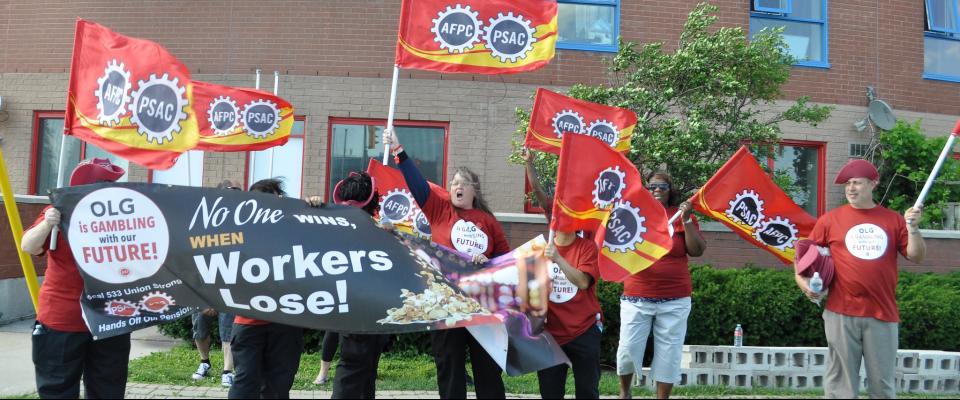Your union is known for the strength it has at the negotiating table; it has negotiated some of the best collective agreements in Canada for members like you. Your contracts are negotiated by bargaining teams who are chosen from the membership (this process may be set out in your bylaws) and by a PSAC negotiator and research officer.
PSAC provides strategic planning support for negotiations, working with input from the bargaining teams to determine objectives and priorities, overarching strategies and the most effective mobilization tactics. The goal of mobilizing is to force the employer’s hand in addressing key workplace issues by demonstrating membership support for the bargaining team and the bargaining demands.
Bargaining process
The bargaining process is informed by legislation and union regulations (Regulation 15C for DCLs). Most directly chartered locals fall under provincial jurisdiction, so timeframes and processes may vary slightly from one DCL to the other. PSAC’s internal process is the same regardless of jurisdiction.
Regulation 15C addresses the following:
-
Who the regulation applies to
-
Definition of the roles and responsibilities
-
Explanation of the collective bargaining process
-
Overview of the bargaining timelines
-
Description of the input call process
-
Election/selection of the bargaining team and its composition
-
Explanation of settlements
-
Explanation of dispute settlement routes (specific to Federal Public Sector Labour Relations and Employment Act)
-
Explanation of strike votes
-
Explanation of ratification votes
-
Explanation on deviation from the process
Regulation 6 addresses the strike fund, including the following:
-
how long members must wait to receive benefits from the fund
-
When strike pay is issued and how much pay members can expect to receive
-
Explanation of provisions for strategic strike actions and corresponding pay
-
Explanation of who is not eligible for strike pay
-
Explanation of administration of the strike fund
-
Explanation of the method of payment of the benefit
Success in bargaining
All of the following elements are key to successful bargaining:
-
Membership engagement from the bargaining input stage until the resolution of negotiations
-
Bargaining teams keeping members informed
-
Scaled up mobilization up as bargaining intensifies
-
Members presenting a unified front to the employer
-
Bold and creative demonstrations of solidarity
-
Achieving a collective agreement that addresses important workplace issues
Bargaining is a time when you come together with your colleagues and collectively show the strength of your union. It is a time when friendships are made, when you support each other, when you experience in very real terms your capacity to fight for what you believe in and deserve.
Bargaining in a great opportunity to engage all of the membership and build a stronger local.
 Member Login
Member Login



